Sit on your couch and take a deep breath. Do you know what you’re breathing?
The truth is, you probably don’t. You might get a lingering whiff of the bleach that you just mopped with, or the garlicky aroma of the stir-fry you’re cooking. You might’ve opened a window while mopping, allowing in an odorless waft of smoke or ozone.
When we consider just how many airborne compounds swirl around our homes, interacting with each other and with the walls, carpets and other surfaces, the question of “What are we breathing?” gets pretty complex.
That complexity doesn’t scare Associate Professor Delphine Farmer, Colorado State University atmospheric chemist, who for the last several years has led the charge on an emerging field of analytical chemistry that’s providing new insights into the invisible, breathable makeup of indoor environments. She and Marina Vance, an engineer at the University of Colorado Boulder, led an innovative set of experiments this spring that probed the main drivers of this complex indoor air chemistry. Their experiment, called Chemical Assessment of Surfaces and Air, or CASA – was conducted alongside about 40 collaborators across 12 U.S. institutions.
This large research team is the nation’s premiere group studying the chemistry of indoor environments, and they are supported by the Sloan Foundation, which has developed a multimillion-dollar program aimed at growing this field of scientific inquiry. The researchers have set out to quantify how the chemistry of indoor environments is shaped by everything from building attributes to the everyday activities of their human occupants.
Net-Zero house at NIST
During March and early April 2022, the research team conducted their experiments at the Net-Zero Energy Residential Test Facility, a home-turned-laboratory at the National Institute of Standards and Technology in Gaithersburg, Maryland. Farmer, Vance and colleagues from NIST, Bucknell University, University of California San Diego and many others, descended on the house and took turns running various analytical instruments while conducting carefully designed experiments that simulated actual chemistry in homes.
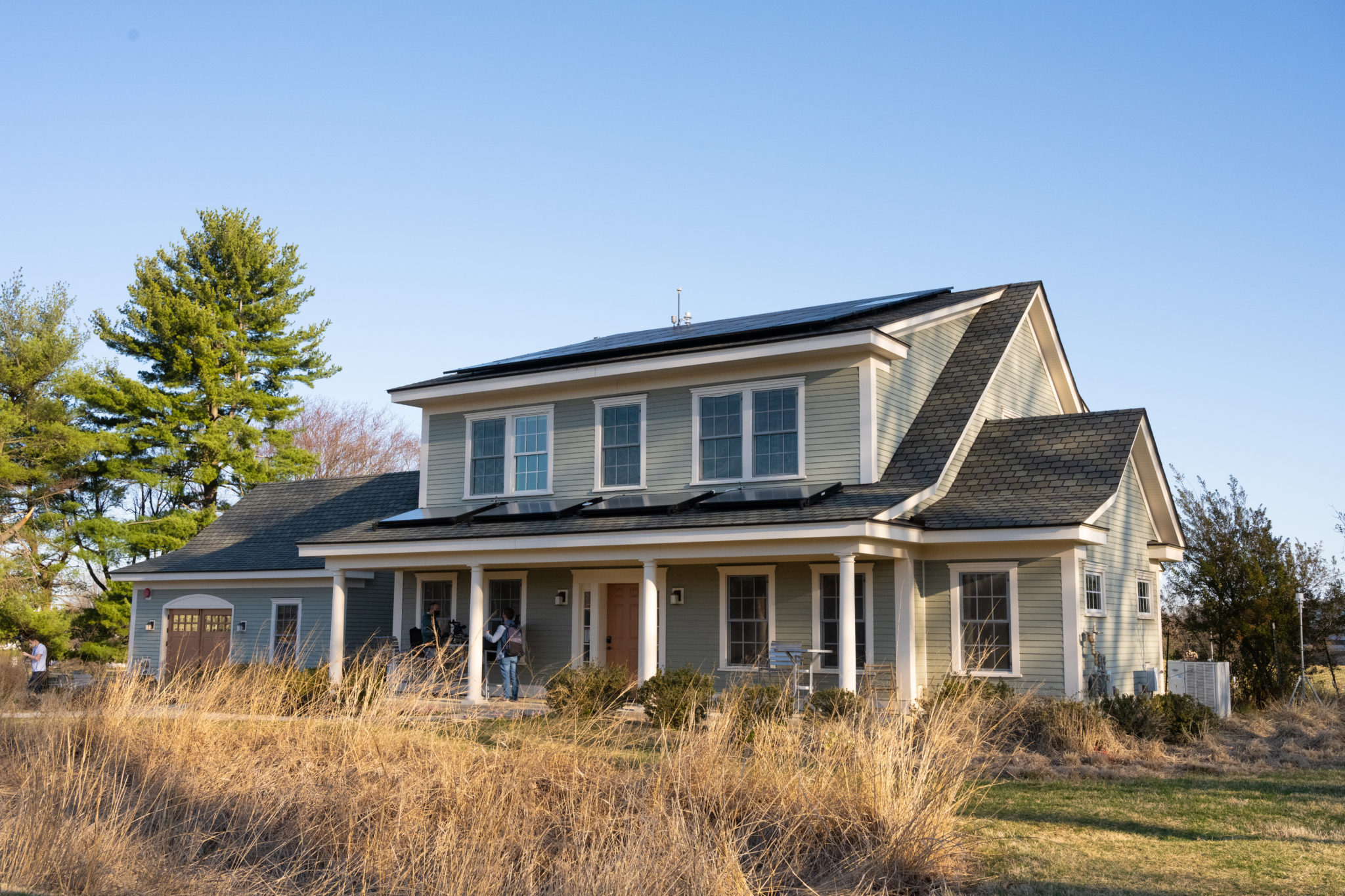
The Net-Zero Residential Test Facility at the National Institute of Standards and Technology.
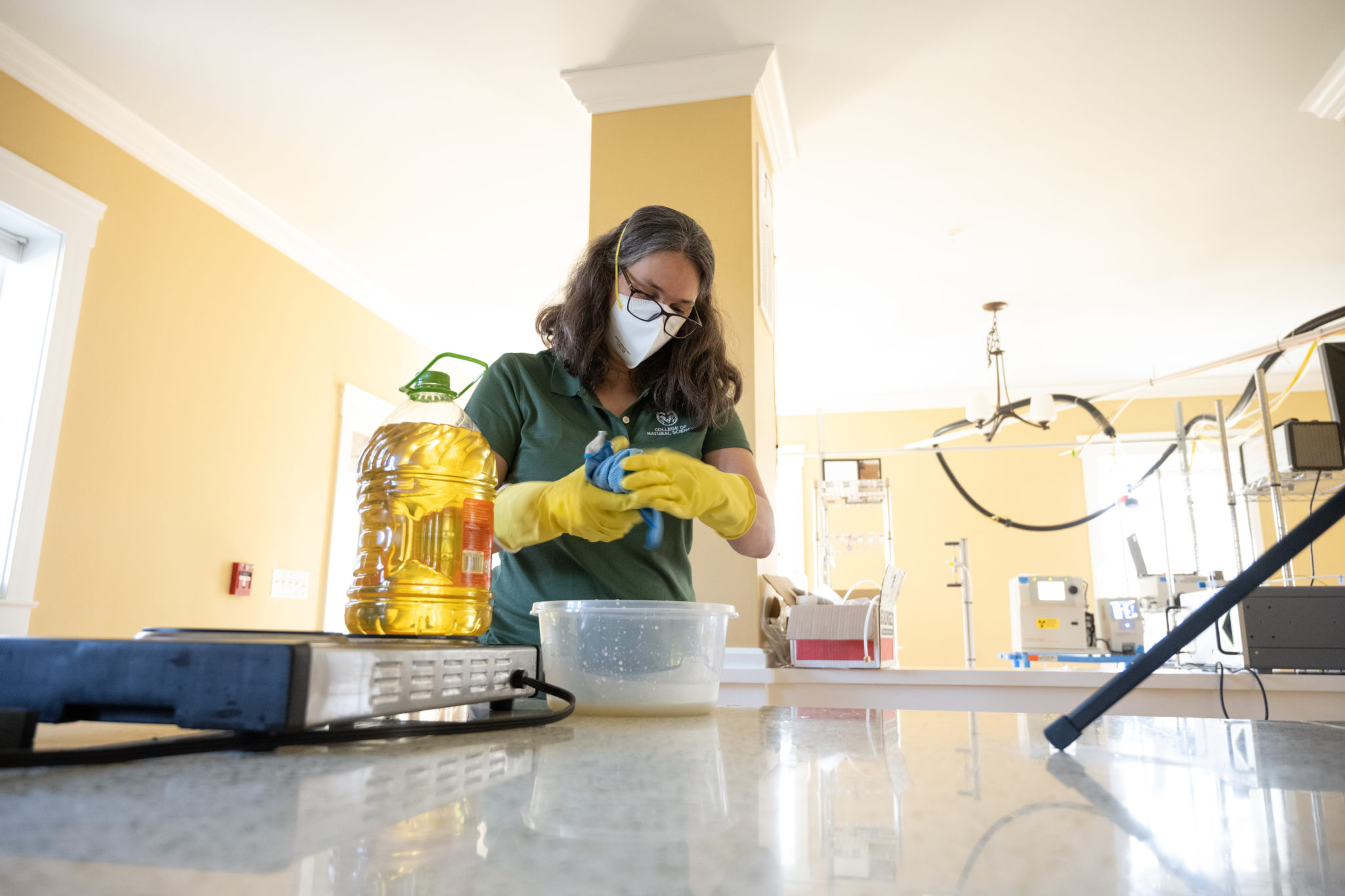
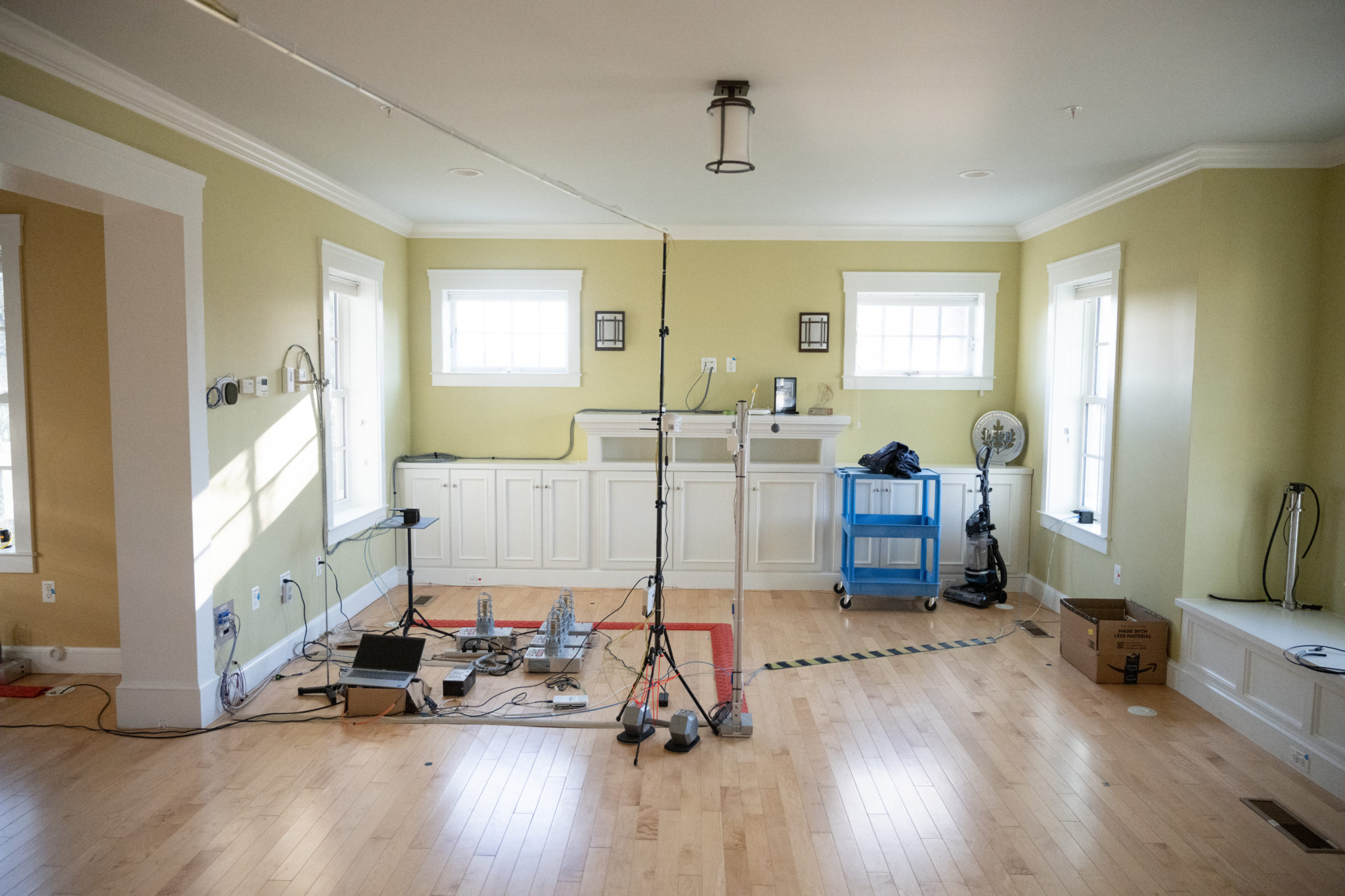

CASA researchers measured the chemistry associated with activities like cooking and cleaning.
The Chemical Assessment of Surfaces and Air experiment, delayed a year due to the pandemic, was a follow-up to a 2018 baseline experiment called HOMEChem, or House Observations of Microbial and Environmental Chemistry.
“One thing we learned from HOMEChem is just how much stuff is in the air,” Farmer said. “You can think of it like a forest. There’s all this fuel that’s just ready to go; and the thing that’s going to get the chemistry going are these oxidants outside, like urban smog. When these oxidants come inside, we’re going to expect a lot of chemistry.”
HOMEChem experiment
HOMEChem, or House Observations of Microbial and Environmental Chemistry, took place in 2018 and provided baseline measurements and hypotheses for the more recent CASA experiment.
Read more.
In other words, during CASA the researchers dove not just into the “what,” but the “why” of the air chemistry in a typical home.
During the 2018 HOMEChem experiments, the researchers established a solid baseline of what chemicals are formed through activities like cooking, cleaning and breathing, and how those chemicals interact. During those experiments, they realized that the surfaces in the home – the walls, the paint, the carpets, the fabrics – play a key role in the different compounds that arise as the result of in-air mixing. They wanted to find out more.
With a second round of support from the Sloan Foundation, the researchers dove into these questions with additional experiments aimed at recreating and measuring such surface-mediated chemistry.
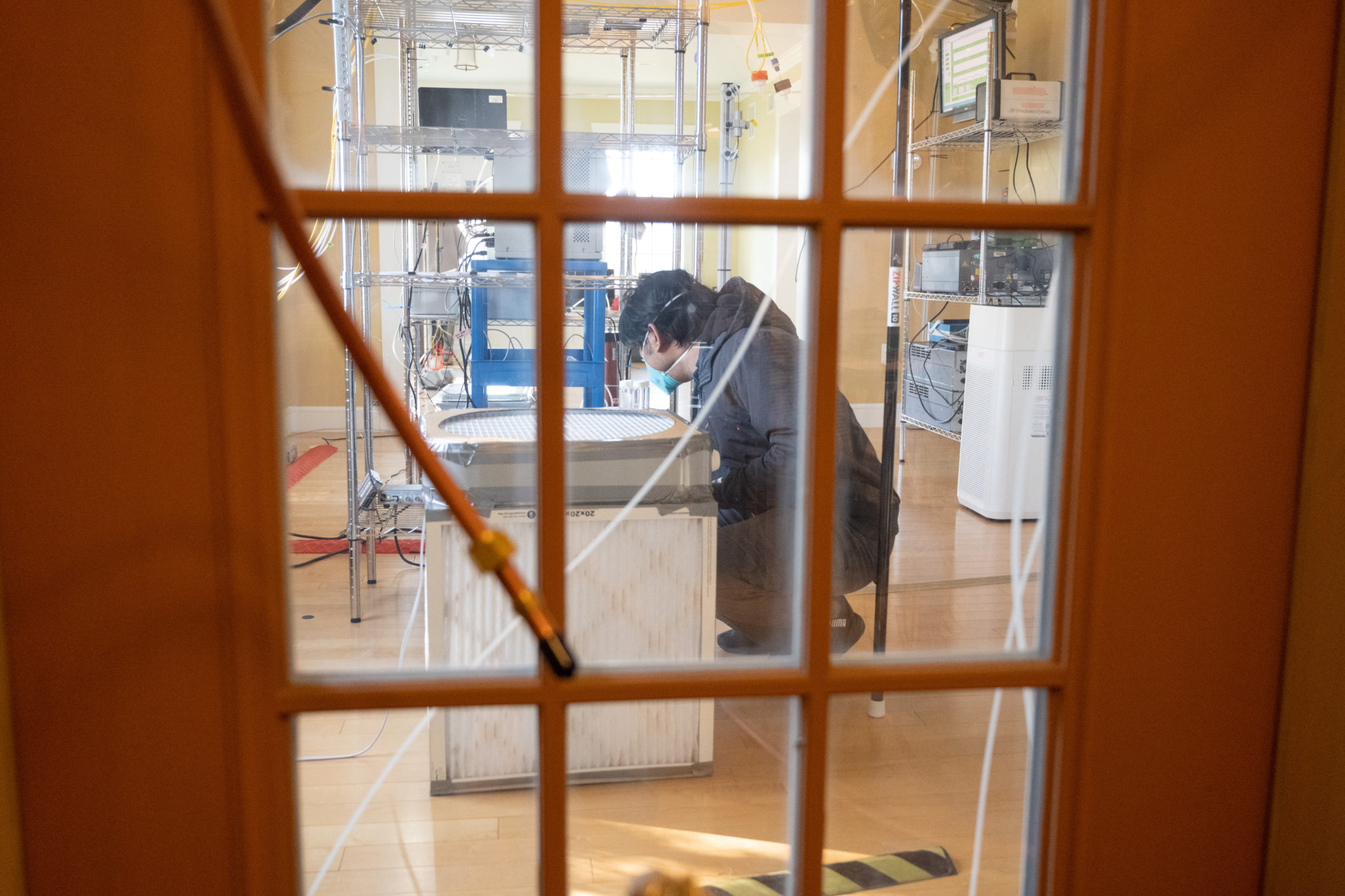
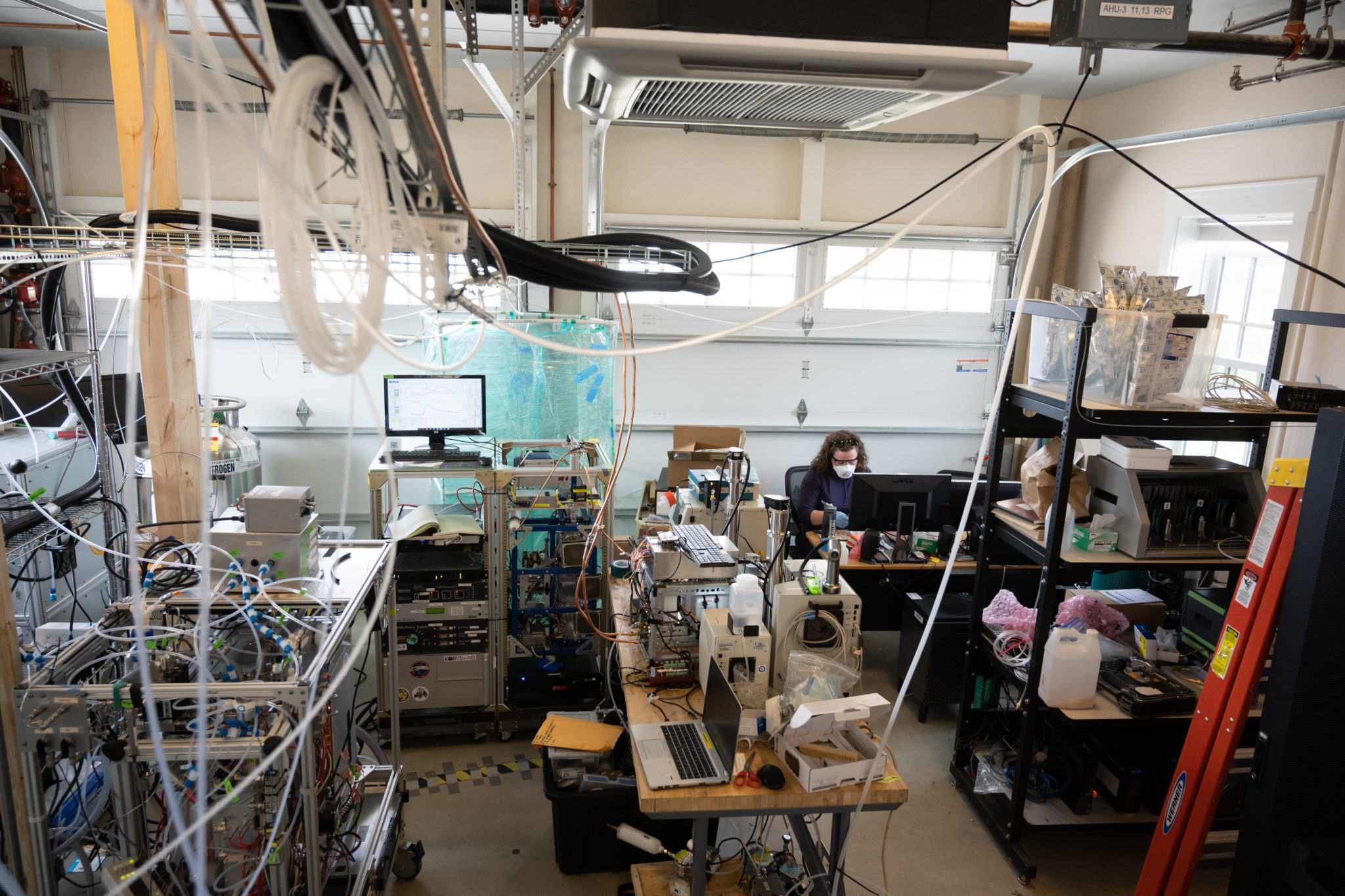
The Net-Zero house’s adjacent garage was packed full of sensitive instrumentation during CASA.
Mixing outdoor, indoor air
Also during HOMEChem, they found – and intuitively knew – that it’s impossible to keep outdoor and indoor chemistry separate, so they designed new experiments incorporating these natural mixing processes.
For example, during the third week of the CASA experiment, CSU postdoctoral research fellow Kathryn Mayer used an aerosol mass spectrometer to look at the composition of particles inside the home after the introduction of wildfire smoke. For the project, she created a system to inject both new and aged smoke in a controlled manner into the test home. For “new” smoke, she used a commercial cocktail smoker. To “age” their smoke – mimicking smoke that’s wafted hundreds of miles – Mayer designed a chamber that would first collect the smoke and mix with oxidants like ozone for several hours before being injected into the house.
“Pollutants can mix with wildfire smoke and create a kind of chemical soup inside your home,” Mayer said. “Unfortunately, there are lots of large population centers that have air pollution problems, and then when you add smoke into that mix, you’re making an already bad problem even worse. I think understanding those chemical transformations will be really interesting.”
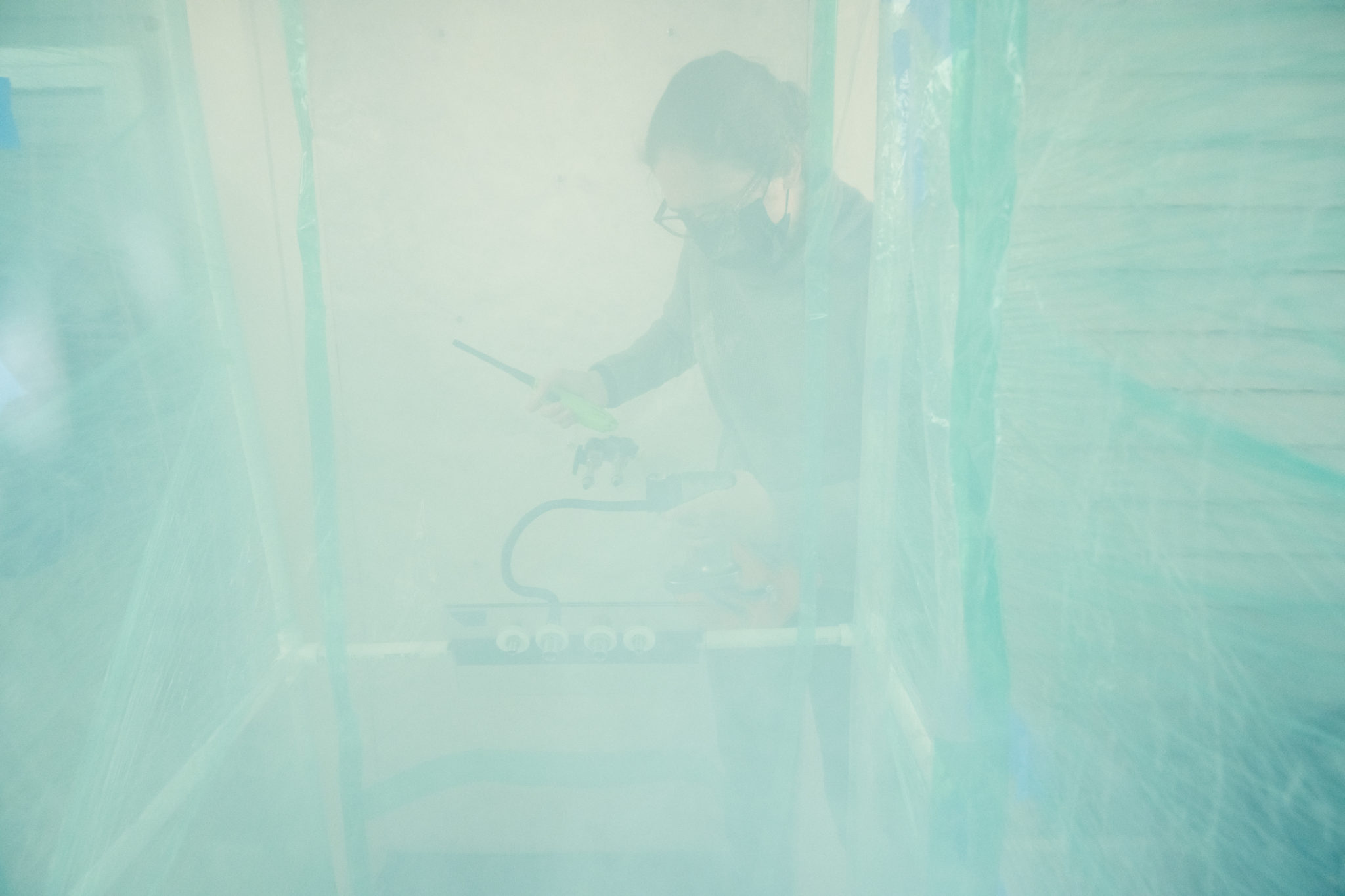
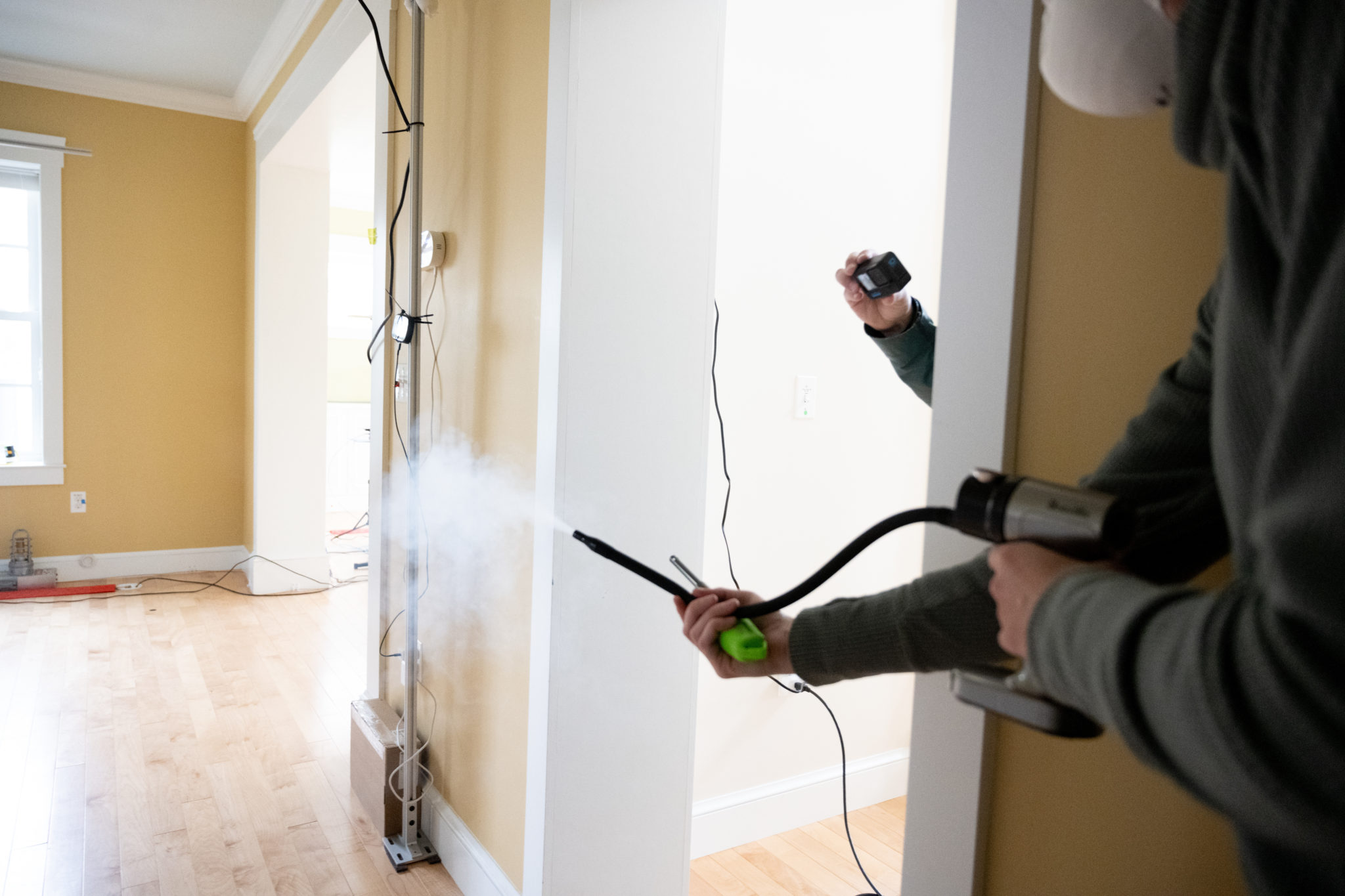
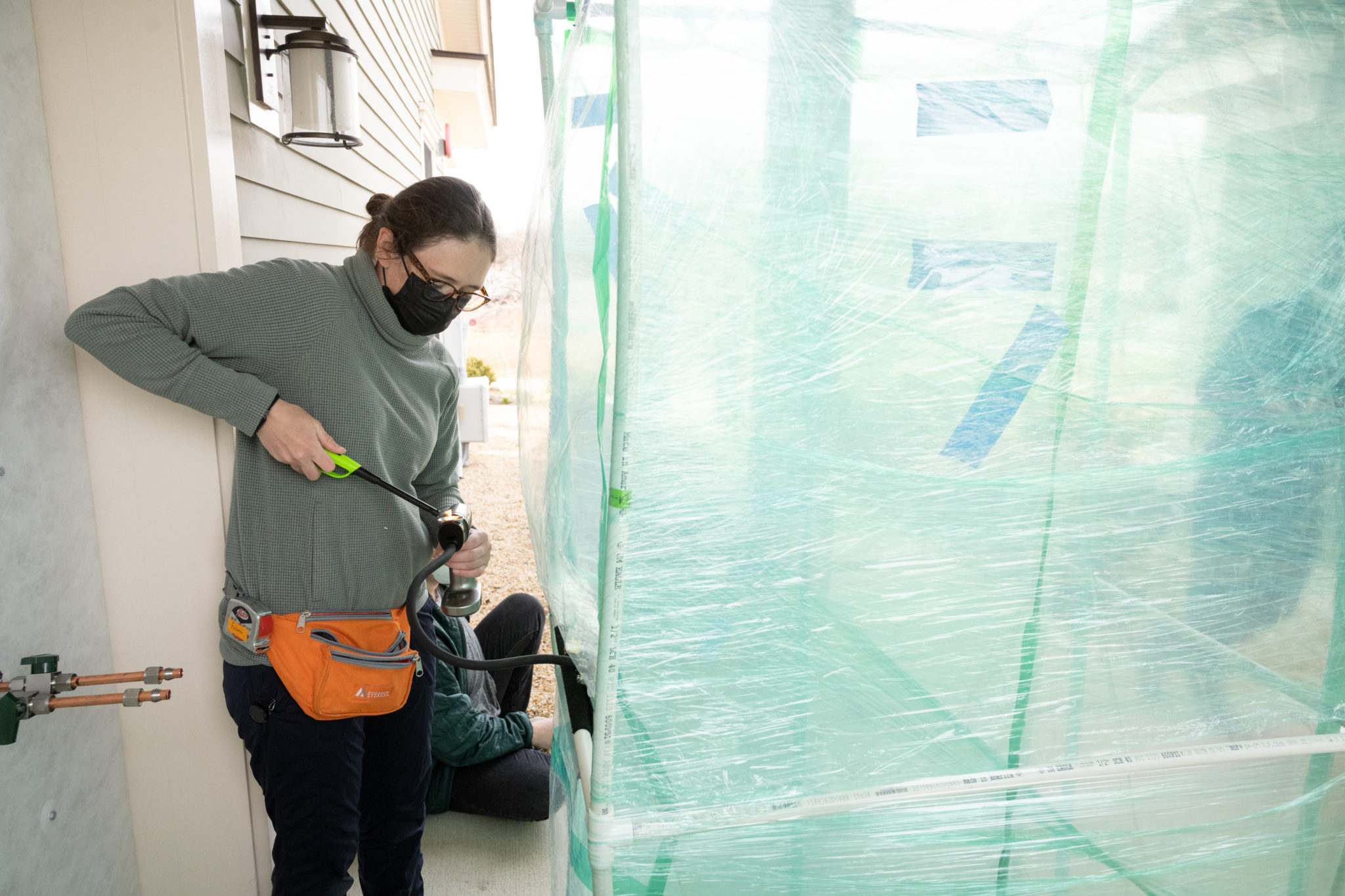
CSU postdoctoral fellow Kathryn Mayer led an aerosol-measurement experiment that introduced wildfire smoke into the home.
For the smoke experiments, Mayer was responsible for getting the smoke in. Another member of Farmer’s team, postdoctoral research fellow Jienan Li, was responsible for getting it out. For CASA, Li led the testing of commercial air purifiers, including HEPA filters and activated carbon filters, to see how effective they were at removing smoke and other pollutants from the house. Li also added ozone to the house and measured the resulting ozone chemistry with a chemical ionization mass spectrometer.
“I’m quite interested in how the outdoor ozone impacts room air that people breathe inside,” Li said.
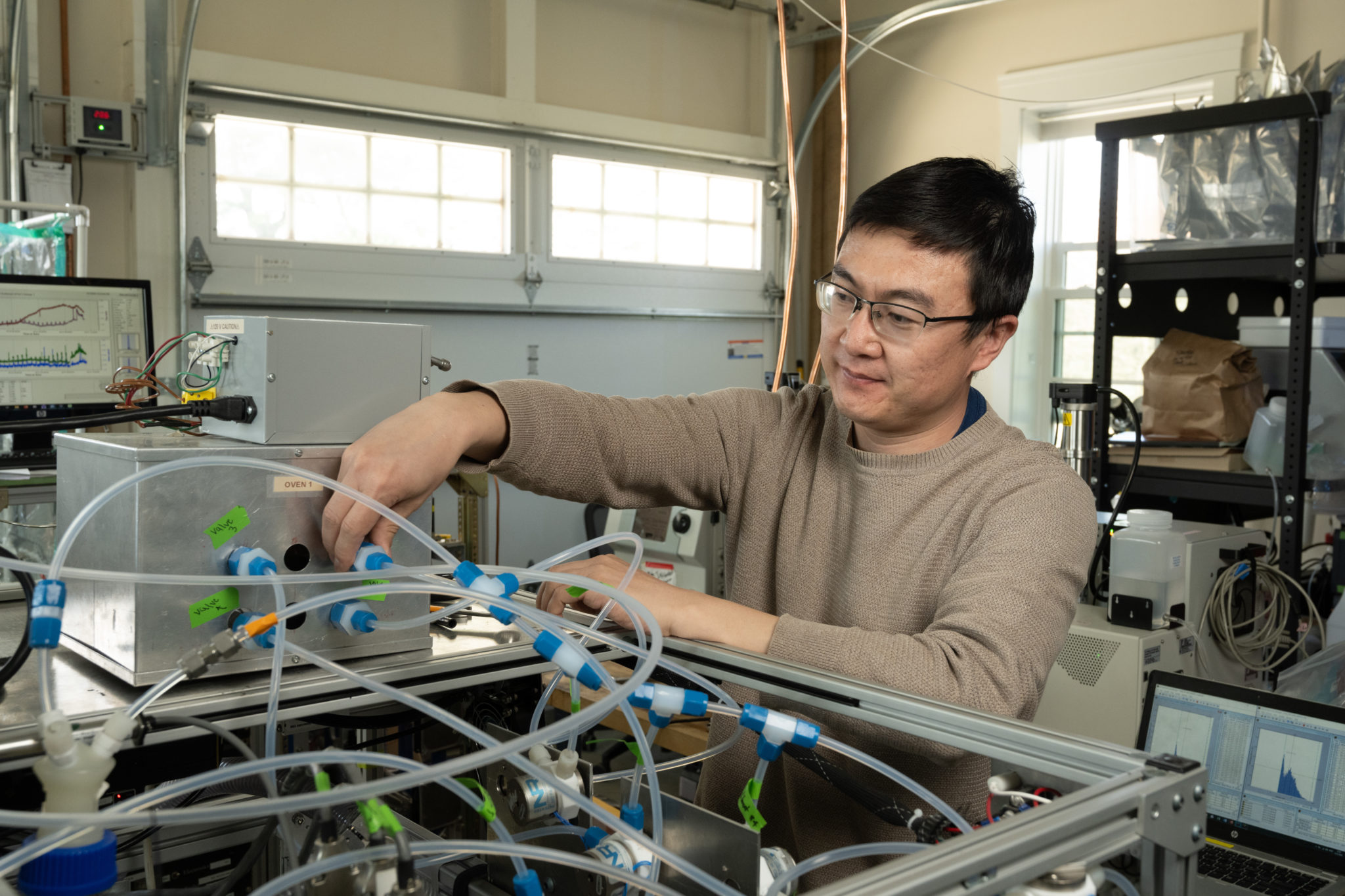
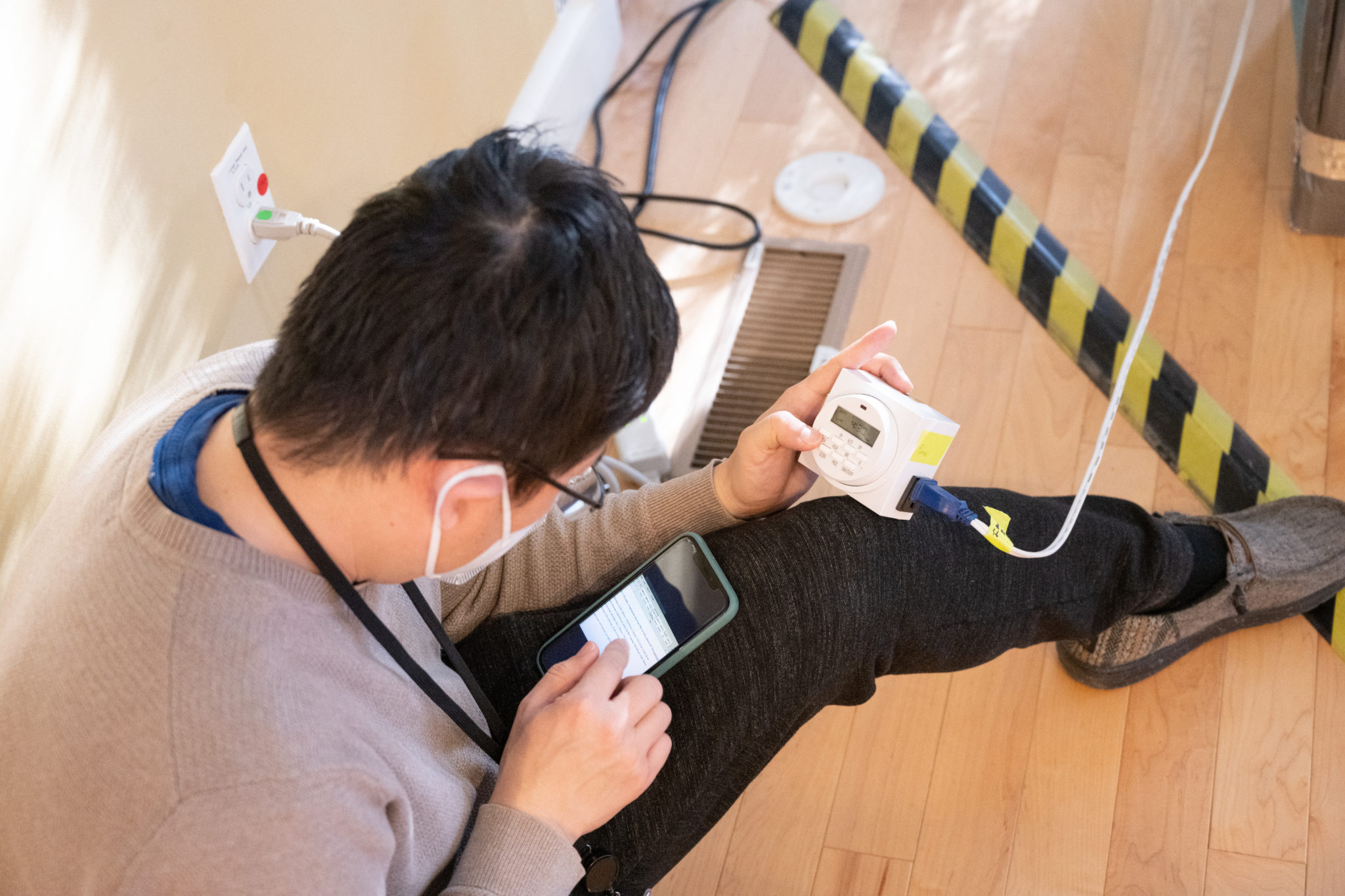
CSU postdoctoral fellow Jienan Li explored the impacts of ozone and other pollutants inside homes.
Other researchers measured compounds like carbon dioxide and ammonia and recorded how these substances interacted with each other and surfaces.
The Net-Zero Residential Test Facility at NIST was an ideal experimental location because it is well controlled with little indoor/outdoor air exchange, providing a good blank slate for the researchers to conduct their studies.
Over the next several years, the researchers will crunch their data and publish papers. The community of indoor air chemists will continue to grow, as Farmer and others lead workshops and scientific meetings to share results and design future experiments.
The vast majority of traditional atmospheric chemistry focuses on outdoor air quality – ozone in cities. Volatile organics from fracking. Wildfire smoke. But precious little science has been dedicated to studying the fundamental chemistry of the insides of our homes and offices, and how indoor and outdoor air are constantly mixing to present new chemistry. That deficit is what got Farmer and the team hooked on answering more questions about indoor air, and what jumpstarted their experimental efforts.
“It’s that intersection of outdoor and indoor air quality that I think is really setting our new experiments apart from our previous ones,” Farmer said.
The CSU team who participated in CASA: Farmer, Mayer, Li, research scientist Lauren Garofalo, and Ph.D. student Katelyn Rediger.
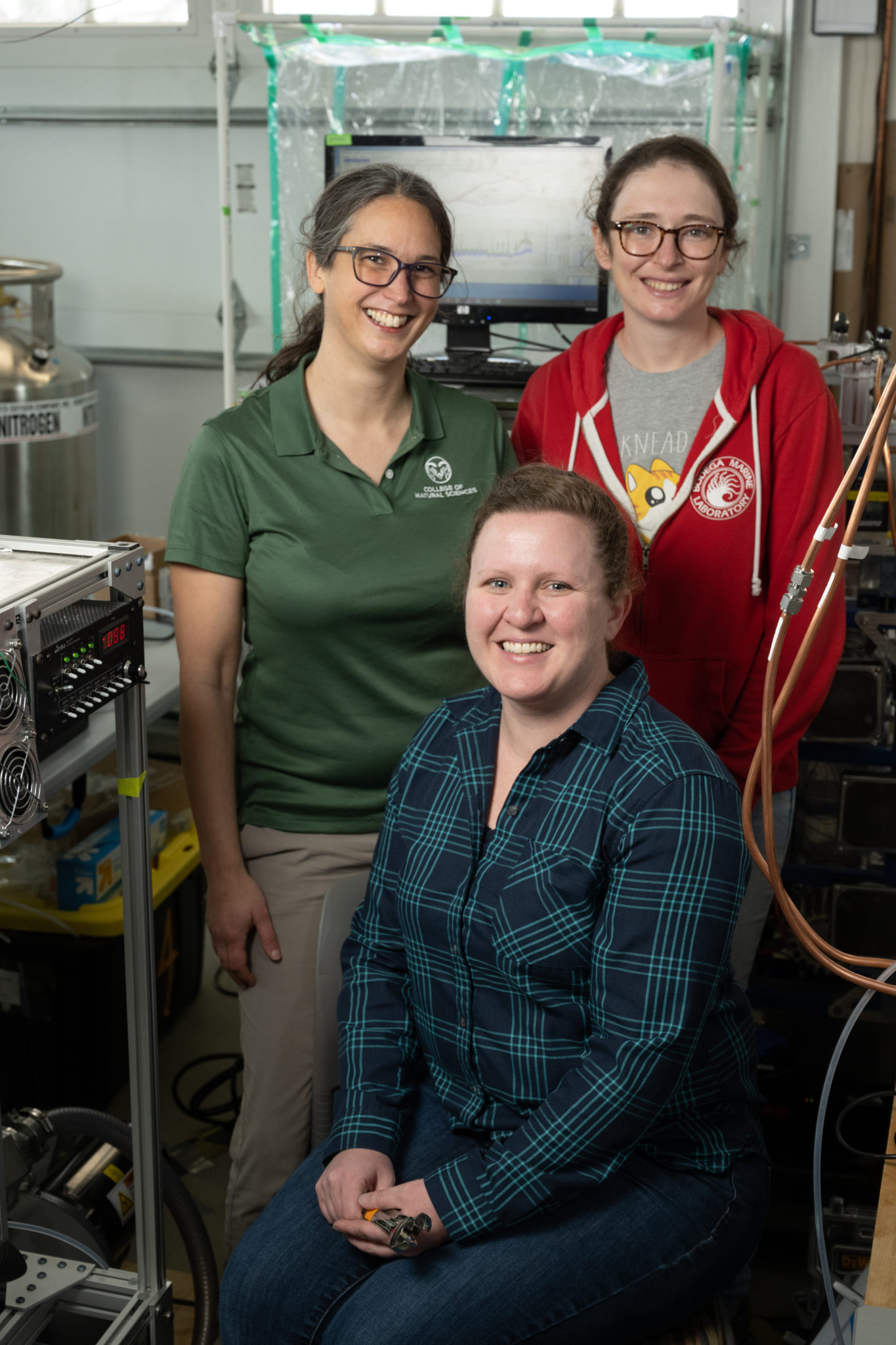
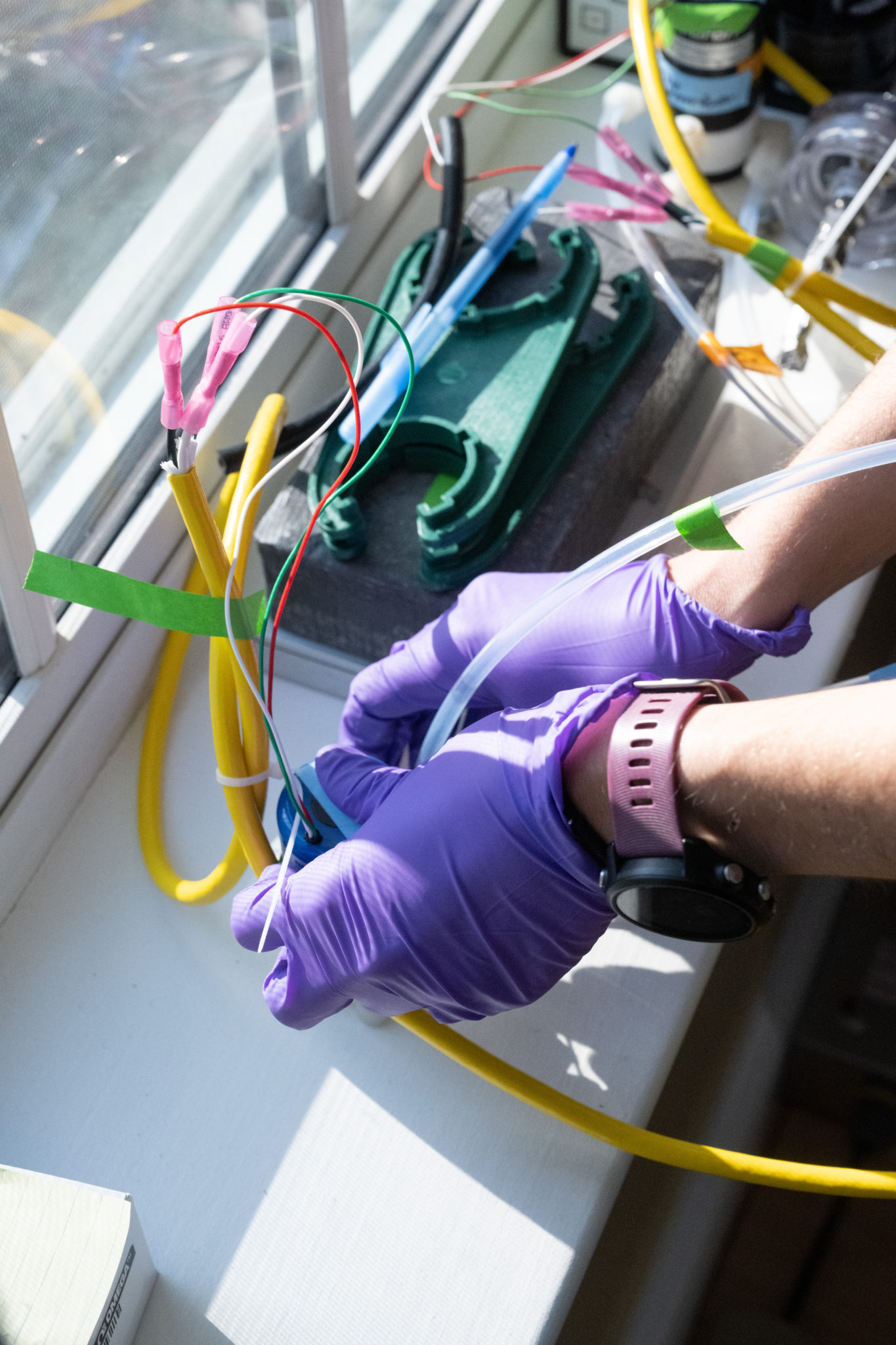
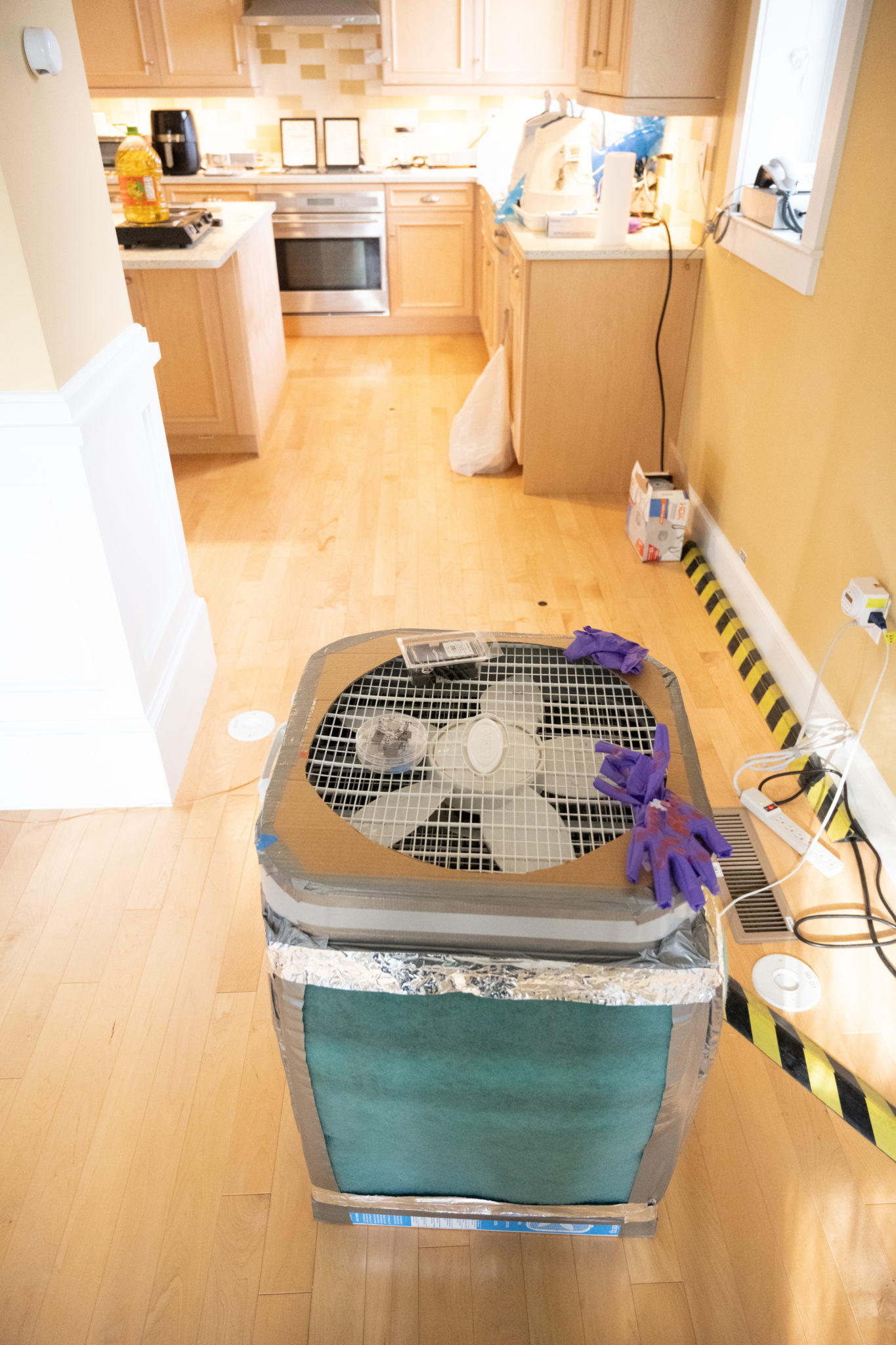
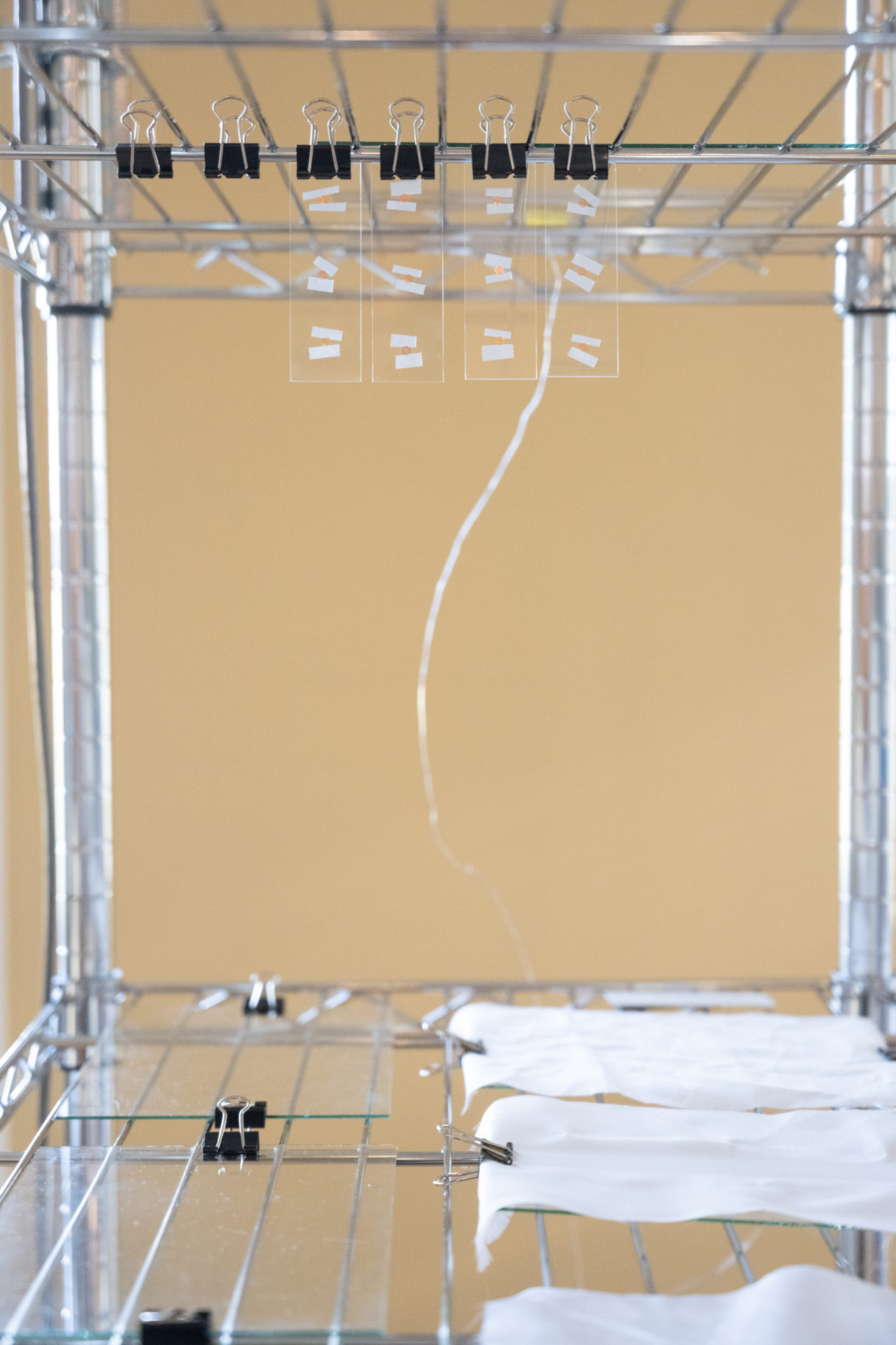
Left: CSU researchers Delphine Farmer, Lauren Garofalo and Kathryn Mayer. Continued: More scenes from the CASA experiment.
Open house
The CASA team will host an open house showcasing their experiments and instrumentation on April 8 at the NIST test facility.